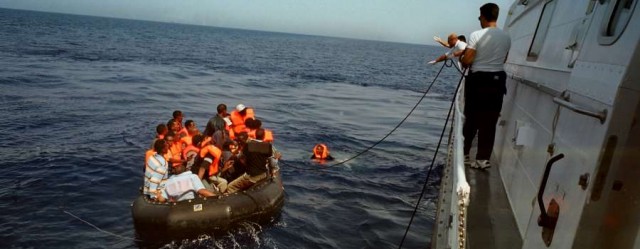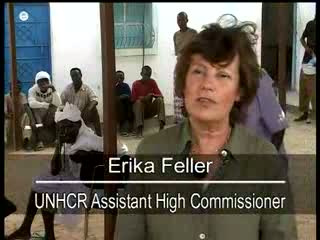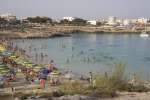Home > What We Do > Asylum and Migration
Asylum and Migration

All in the same boat: The challenges of mixed migration
Climbing over razor wire fences, taking to sea in leaking boats or stowing away in airless containers, refugees and migrants around the world risk their lives every day in desperate attempts to find safety or a better life.
Behind the dramatic headlines and the striking images of people on the move, there are personal stories of courage, tragedy and compassion. Although refugees and migrants often use the same routes and modes of transport they have different protection needs.
Factors that have contributed to the increase in the scale of international migration include globalization and growing disparities in living conditions, both within and between countries. Among the people on the move today, many are seeking employment or educational opportunities, others want to reunite with family members and still more are fleeing persecution, conflict or blind violence in their countries.
While refugees and asylum seekers account for only a small proportion of the global movement of people, they frequently travel alongside migrants. Many of these movements are irregular, in the sense that they often take place without the requisite documentation, use unauthorized border crossing points or involve smugglers.
The people who move in this manner place their lives at risk. They are often obliged to travel in inhumane conditions and may be exposed to exploitation and abuse. States regard such movements as a threat to their sovereignty and security. And yet this may be, in some cases, the only escape route open to those fleeing war or persecution.
While recognizing that border controls are essential for combatting international crime, including smuggling and trafficking, UNHCR stresses the need for practical protection safeguards to ensure that such measures are not applied in an indiscriminate or disproportionate manner and do not lead to refugees being returned to countries where their life or liberty would be at risk.
UNHCR works with governments around the world to help them respond to some of these challenges in a coherent and practical way. An example of this is a 10-point plan which UNHCR is implementing. It sets out key areas in which action is required to address mixed migration in countries of origin, transit and destination.
International Migration
The link between movements of refugees and broader migration attracts growing attention.
Mixed Migration
Migrants are different from refugees but the two sometimes travel alongside each other.













































